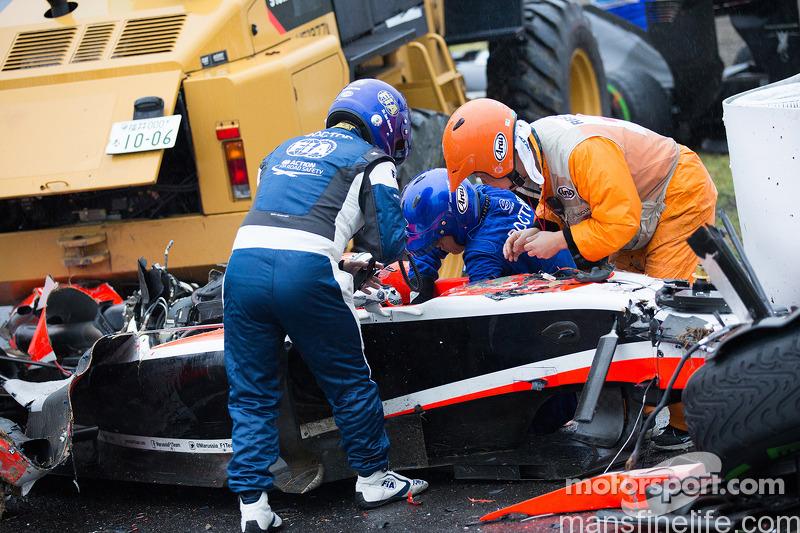Formula 1 driver Jules Bianchi has passed away at the age of 25. Bianchi succumbed to the severe head injury he received last October at Suzuka in the waning stages of the Japanese Grand Prix, when his Marussia collided with a recovery vehicle on the track under rainy Yellow Flag conditions. Due to the low profile of F1 cars, his head struck the lower edge of the crane at a high rate of speed dealing him the diffuse axonal injury from which he would never recover. Jules was a highly regarded, up-and-coming pilot with connections to Ferrari and after scoring his and Marussia’s first-ever Championship points at Monaco last year it seemed as if the sky was the limit for his career in motorsport. We send our condolences to his family, friends and colleagues and we mourn his premature passing. It seems profoundly unfair that someone so young and talented should have his life cut short in this fashion. But his chosen vocation was a dangerous one. Despite the fact that there had been no fatalities in F1 in 20 years, we can never loose sight of the fact that these drivers put their lives on the line every time they step into the cockpit despite how “easy” it looks on TV.
It has to be said that the FIA’s report on the incident did not exactly cover the organization in glory. It firmly laid the blame on Jules for not lifting enough with the yellow flags waving, although there were conflicting reports as to where exactly a driver might be able to see the yellows and how much he was required to lift. The report also did not seem to give any credence to the extenuating circumstances that may have led to the accident, such as the extremely wet track conditions, the increasingly poor visibility as the sun began to set at Suzuka and the presence of a large recovery vehicle on track while cars were still circulating at speed, as well as confusion about proper double yellow flag procedures. And yet in response to Bianchi’s awful crash, FIA mandated several new procedures for this year, including a virtual safety car to slow all cars immediately rather than racing back to get behind the actual, physical safety car; earlier start times for races that seem likely to go into the dusk; revised rules on the allowability of recovery vehicles and marshals on the track; and stricter guidelines for the drivers responding to yellow flags. So clearly the FIA felt that despite their blame-laying there was still need of revisions for better safety, if only to protect the drivers from their own aggressive natures.
Of course, racing is an inherently dangerous pursuit. If just anyone could do it and without risk what would be the point? The drivers at the highest levels of motorsport will always be taking extraordinary risks to life and limb no matter how safe the cars become or how much procedures and geography are modified at the circuits. We’ve come a very long way since the dark days of the past in F1, when death was omnipresent and we would lose one or two drivers a season. That all changed with the death of Ayrton Senna at Imola in 1994. That seemingly inexplicable tragedy befalling one of the sports all-time greatest drivers over the course of a deadly weekend spurred Bernie Ecclestone to give Professor Sid Watkins free reign to enforce uniform codes of medical and rescue procedures at all the tracks and the redesign of F1 cars to increase driver survivability in case of a severe shunt, not to mention the introduction of the HANS device. It all worked remarkably well and there had not been another fatality in F1 for 20 years, a record of safety unsurpassed in any other major motorsport category. But after viewing the horrific footage of Jules’ impact with the safety vehicle last fall it seemed to me that this would prove to be the worst on-track accident in Formula 1 since Senna. Unfortunately, that turned out to be all too true. Goodbye, Jules, and rest in peace. You will be missed but not forgotten.



